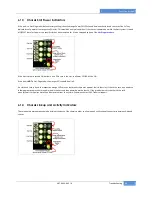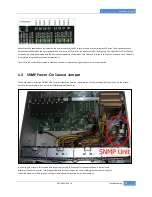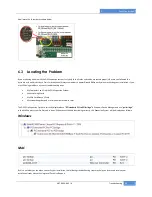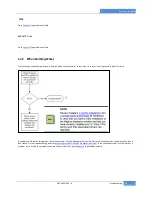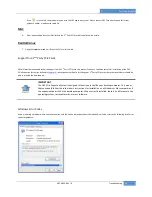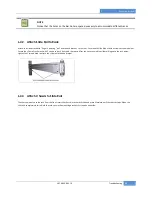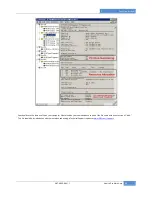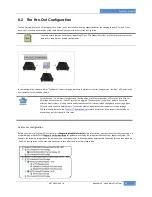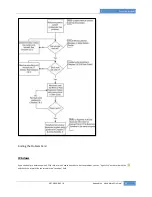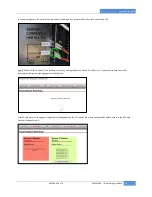
Ones Stop Systems
EB7-X8G2-RAS | 8
Appendix A Need More PCIe Slots?
62
8
Appendix A Need More PCIe Slots?
8.1 Multiple PCIe Expansion System Configurations
The PCI Express Local Bus Specification defines the bus as
hierarchical
, where logical PCI to PCI Bridges (PPBs) may be used to add "levels" to
the PCI bus hierarchy within a PCIe switch. Because hierarchies are
organized systems arranged into different levels
, you can take advantage of
this automatic organizing and layering to expand the number of available PCIe slots beyond the number available in your computer’s
motherboard.
You can easily add two or more OSS expansion systems to your current system in a "fan-out" configuration. Each of these configurations has
advantages and uses. To determine which type of configuration you wish to use, you should first understand a few basic facts:
1.
In a desktop computer, the BIOS enumerates automatically behind logical PCI bridges. In the OSS configuration, the BIOS looks
beyond the Host card to find any PCIe cards installed in the expansion chassis behind a PCIe switch. The PCIe switch, in turn,
emulates logical PRBs. The BIOS can then configure the cards and allocate resources. Empty PCIe slots are ignored during
configuration.
In theory, your computer “should” be able to travel across up to 255 PCIe buses to identify and configure all
installed PCIe cards. The 255 PCI bus limit is actually a theoretical maximum. The practical limit is somewhat
lower and differs from one system to another, but should still be a fairly large number.
In a desktop computer the bus numbers tend to be lower (0, 1, 2, etc.). Once the BIOS is finished configuring
everything and assigning resources, the Operating System starts loading and activates the PCIe cards found.
When adding more Expansion Systems to an existing system, be sure to connect and test them “one-at-a-time.”
This will allow you to quickly resolve any connectivity, or other, issues right at the start. DO NOT INSTALL any
3rd Party PCIe cards into any system until ALL attached systems are working correctly.
2.
Most computers allow multiple logical bridges (and thus PCIe buses) to be correctly configured. Some computers, unfortunately,
place an arbitrary limit on the number of bridge levels that can be traveled during power-on configuration. Your computer “power-
on-software” should be compliant with the PCIe bus specification in order to effectively use a OSS PCIe Expansion System. For a "fan-
out" system configuration, where more than one PCIe expansion system is being used, you should count all of the logical bridge
levels to your most deeply nested PCI bus to determine the maximum number of bridge levels that must be traveled. Exceeding this
number may cause software configuration conflicts even though hardware-wise the PCIe system is properly configured.
3.
For easier understanding, a given PCI system should be viewed as a “Resource Toll road” that runs from the computer CPU (resource
home), through the “Toll Booths” (the PCIe switches and logical PCI bridges), to the “Resource Users” (PCIe Cards). As in the case of
a real Toll Road, the more Toll Booths you have to cross (even if it takes a nanosecond), the longer it will take you (your data) to get
from the PCIe Card to the CPU and back again. Under most circumstances the effect cannot even be detected. However, under other
conditions, it can be important to know about.

